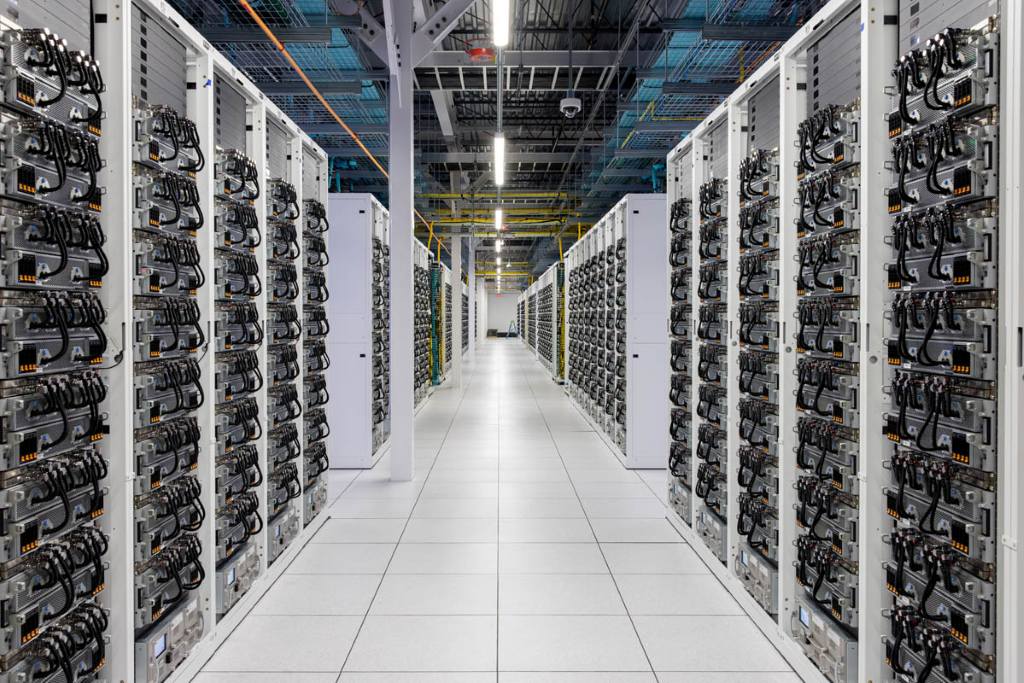Imagine a world where servers hum like a beehive, packing massive power into tiny spaces. That’s high density computing in action. It crams more processing punch into less room, fueling everything from AI breakthroughs to cloud magic. But why does it matter now? Well, as data explodes, traditional setups just can’t keep up. According to the International Data Corporation (IDC), global data volume will hit 175 zettabytes by 2025. Meanwhile, the U.S. Department of Energy reports data centers could guzzle up to 8% of national electricity by 2030. This surge demands smarter, denser solutions. In this piece, we’ll dive into vivid examples of high density computing. You’ll see how it transforms industries. Plus, grab practical tips to apply it yourself. Let’s unpack the heat – literally.
What Is High Density Computing?
High density computing packs a lot of computational muscle into small footprints. Think racks pulling 50 kilowatts or more, compared to the old 5-8 kW norm. It thrives on efficiency, squeezing every watt for max output.
Engineers design these systems for intense workloads. They stack GPUs and CPUs tightly, like books on a shelf. But density brings challenges. Heat builds fast, so cooling becomes king. Still, benefits shine through. Organizations save space and boost speed.
For instance, in hyperscale environments, it supports AI training clusters. These setups process petabytes in hours, not days. As a result, businesses scale without sprawling facilities. Moreover, it aligns with green goals by optimizing energy use per task.
Transitioning from basics, let’s explore why this tech surges today.
Why High Density Computing Matters in 2025
AI and big data ignite the need for dense compute power. Workloads like machine learning devour resources, pushing racks to 100 kW limits. According to McKinsey’s October 2024 report, AI-ready data center capacity grows 33% yearly through 2030. That’s huge.
Furthermore, edge computing adds urgency. Devices at the network fringe demand low-latency crunching. High density fits perfectly, enabling real-time decisions. For example, autonomous cars rely on it for instant data analysis.
Additionally, sustainability drives adoption. Dense systems often achieve better power usage effectiveness (PUE) ratios. They use less overall energy for the same output. Thus, companies cut carbon footprints while ramping performance.
However, it’s not just tech giants benefiting. Small firms tap in via colocation. They rent dense rack space, avoiding massive builds. In short, high density levels the field. Now, let’s look at key applications.
Key Applications of High Density Computing
High density setups excel in demanding fields. They handle complex tasks with grace. Let’s break down prime uses.
AI and Machine Learning Workloads
AI thrives on dense computing. Training large language models needs thousands of GPUs synced perfectly. High density racks deliver that unity, slashing training times.
For example, generative AI like ChatGPT models require 80 kW per rack. Dense configs make it feasible. Moreover, inference – the quick response phase – benefits too. It processes queries at scale, serving millions daily.
Teams use these for drug discovery or climate modeling. The result? Faster insights, fewer resources wasted. However, as AI spreads, the risk of malware targeting these dense compute environments increases. Therefore, ensuring robust cybersecurity measures becomes essential to protect valuable data and computational resources.
High-Performance Computing (HPC) in Research
HPC pushes boundaries in science. Simulations for weather or genomics crunch exabytes. High density provides the raw power.
Universities and labs deploy clusters with 30-40 kW racks. This setup runs parallel jobs smoothly. Consequently, researchers solve problems quicker.
Take genomics: Dense systems map genomes in days. That’s a leap from weeks. Plus, it democratizes access. Smaller institutions join big leagues affordably.
Cloud and Edge Deployments
Cloud providers scale with density. Hyperscalers like AWS pack more virtual machines per rack. Users get reliable, fast service.
At the edge, 5G networks demand instant compute. High density mini-centers near users handle video streaming or IoT data. For instance, smart cities process traffic feeds locally. This cuts latency, boosts responsiveness.
Overall, these applications show versatility. Next, we’ll spotlight real-world examples.
Real-World Examples of High Density Computing
Stories bring concepts alive. Here, we spotlight cases where dense compute shines. Each offers lessons for your setup.
NVIDIA’s AI Factories: Pushing 800 VDC Boundaries
NVIDIA builds “AI factories” for massive training. Their 2025 whitepaper details 800 VDC architectures. These deliver power directly to racks, skipping conversions. Efficiency jumps, supporting 600+ kW densities.
In practice, clusters run thousands of Blackwell GPUs. Volatility – bursts of intense compute – gets tamed. One deployment trained LLMs with 500x AI power growth over a decade. Partners see higher throughput, more revenue. For you, this means planning for direct power feeds early.
EdgeConneX’s Flexible High-Density Hubs
EdgeConneX crafts centers for mixed AI/HPC loads. They support 600 kW per rack, blending GPUs and storage. A 2025 case involved NVIDIA H100 deployments. Cooling mixed air-liquid, it handled volatile AI spikes.
Results? Clients scaled without downtime. PUE dropped to 1.25 in Shanghai clusters by 2025. Key takeaway: Modular designs adapt as chips evolve. Start with hybrid cooling for future-proofing.
T5 Data Centers’ Liquid-Cooled Trading Firm Overhaul
A quantitative trading firm partnered with T5 in 2025. They retrofitted a 40,000 sq ft space for GPU clusters. Liquid cooling managed 700 W/sq ft – far beyond air limits.
ASHRAE data shows liquid removes 70% more heat. The firm processed trades in real-time, boosting accuracy. Energy savings hit 20%. Lesson: Retrofit existing sites with direct-to-chip cooling for quick wins.
Bulk Infrastructure’s Green AI Campus
Bulk’s DCM102 in Europe powers Taiga Cloud’s AI. 100% green energy fuels high-density racks. Rear-door exchangers cool ultra-dense setups efficiently.
They hit low PUEs, cutting ownership costs versus urban spots. A case study showed 6x performance growth quietly over years. For sustainability fans, prioritize renewable integration from day one.
CoreSite’s Colocation for GPU Surge
CoreSite aided a cloud provider with NVIDIA H100 scaling. High-density colo handled regional expansion. Racks hit 120 kW for AI inference.
Per their 2025 report, 75% of IT leaders eye colo for AI. It balanced power, cooling, and connectivity. Tip: Choose providers with AI-ready ecosystems for seamless growth.
These tales prove density delivers. But success hinges on smart infrastructure.
Challenges in Implementing High Density Computing
Density dazzles, yet hurdles loom. Power strains grids; heat tests limits. Let’s tackle them head-on.
First, energy demands soar. Racks at 100 kW rival small factories. Grids buckle without upgrades. Solutions? On-site generation or microgrids.
Second, cooling dominates. Air fails post-20 kW. Liquid steps in, but retrofits cost time. Plan phased shifts to immersion or direct cooling.
Third, volatility spikes. AI bursts overload steady systems. Use dynamic power management to smooth peaks.
Additionally, space squeezes urban builds. Vertical stacking helps, but seismic rules apply. Collaborate with locals early.
Finally, skills gap widens. Teams need training on dense ops. Invest in certs for smooth sailing.
Overcoming these unlocks rewards. Now, strategies to thrive.
Strategies for Successful High Density Deployments
Build smart, scale smooth. Here are proven paths.
Optimize Power Distribution
Adopt 800 VDC for efficiency. It cuts losses, packs more GPUs. Start with audits to match supply to loads.
Embrace Advanced Cooling
Liquid rules high density. Direct-to-chip cools hotspots best. Hybrid setups bridge transitions. Aim for 1.2 PUE targets.
Design Modular and Scalable
Use prefab modules for quick ramps. They flex with needs, like AI surges.
Integrate Sustainability
Pair density with renewables. Solar backups slash emissions. Track metrics for green creds.
Leverage Colocation Partners
Rent dense space from pros like CoreSite. It speeds entry, shares expertise.
Follow these, and you’ll harness density’s full force. Let’s wrap with takeaways.
Conclusion
High density computing reshapes tech landscapes. From NVIDIA’s AI factories to T5’s trading triumphs, examples abound. They pack power, speed innovation, and trim waste. Key? Balance density with smart cooling and power.
Stats underscore urgency: 33% yearly AI capacity growth awaits. Yet, challenges like heat yield to strategies like liquid immersion.
Ready to dive in? Audit your setup today. Partner with density pros. Scale your compute – the future computes densely. Start now.
FAQs
What Are the Main Benefits of High Density Computing?
Dense setups save space and energy. They boost performance for AI and HPC. Plus, they cut latency in edge apps. Overall, they future-proof operations.
How Does Liquid Cooling Support High Density Racks?
Liquid pulls heat faster than air. It handles 100 kW loads smoothly. Direct-to-chip versions target hotspots. As a result, PUE drops, efficiency rises.
Can Existing Data Centers Handle High Density Upgrades?
Yes, with retrofits. Add liquid cooling and power boosts. Cases like T5 show 700 W/sq ft success. Plan phases to minimize disruption.
What Role Does AI Play in Driving High Density Demand?
AI needs massive parallel compute. Training clusters demand 80+ kW racks. Inference scales queries fast. Thus, density becomes non-negotiable.
How Do You Measure Success in High Density Deployments?
Track PUE, uptime, and throughput. Aim below 1.3 PUE. Monitor heat rejection too. Real wins? Faster AI jobs, lower costs.
References
- EdgeConneX Blog: https://www.edgeconnex.com/news/edge-blog/the-rise-of-computational-power-the-future-path-of-high-density-data-centers/
- NVIDIA Technical Blog: https://developer.nvidia.com/blog/building-the-800-vdc-ecosystem-for-efficient-scalable-ai-factories
- McKinsey Report: https://www.mckinsey.com/industries/technology-media-and-telecommunications/our-insights/ai-power-expanding-data-center-capacity-to-meet-growing-demand
- T5 Data Centers Case Study: https://t5datacenters.com/resources/ai-infrastructure-challenges-power-and-cooling-in-high-density-data-centers/



